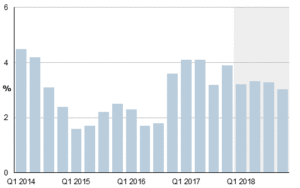ECONOMICS OF LITHUANIA
 GDP
GDP
As a member of the EU since 2004, Lithuania has experienced significant growth coupled with the rapid modernisation of its economy. Domestic consumption and foreign investment are the main drivers of the country’s economic growth.
By 1998, Lithuania’s economy closely resembled that of most other Western European countries. Agriculture accounted for 10 percent of the GDP, industry for 32 percent, and services for 58 percent. The country’s main industries are metal-cutting machine tools, electric motors, television sets, refrigerators and freezers, petroleum refining, shipbuilding, furniture making, textiles, food processing, fertilizers, agricultural machinery, optical equipment, electronic components, and computers.
Over two-thirds of its economy is dependent on foreign markets, and Lithuania has sought to increase its attractiveness to foreign investors. By 1997, foreign capitalists had invested over US$1 billion in the Lithuanian economy, and in 1998, there was an additional US$510 million in new investments. The largest single foreign investor in Lithuania is the United States which accounts for about 18 percent of all foreign investment. The low labour costs and high level of education of the workforce, when combined with the country’s geographic location at the crossroads of Northern Europe, account for the attraction that foreign investors have in Lithuania.
